Ninety percent of the work I do takes place in my head. The other ten percent involves shifting that work from my head to the computer through my fingers. Because so much of my work involves the creative writing of other folks, I spend a lot of time thinking about odd stuff, asking myself odd questions, researching odd topics.
Example? Sure, here’s one. Last week, I found myself exploring the history, function, and evolution of the lapel — complete with tangents on why we only see peaked lapels on formal evening wear, and the sad decline of the boutonnière loop on the reverse of the lapel. Here’s another issue I dealt with last week: at what point, in a science fiction mystery set in a massive orbiting space colony, does the number of sapient species living in the colony cease to create the illusion of the diversity of life in the known universe and begin to become a distraction from the story?
I do most of this thinking and wondering and questioning and researching in a small office with a window that looks out on a deeply uninteresting suburban street. I periodically shift to the kitchen table, where the windows look out on some deeply uninteresting suburban back yards. The absence of anything visually interesting is usually a good thing; it makes it easier to stay inside my head, where almost everything is interesting.
But I also need to regularly reset my brain, so once or twice a week I either bang into the city or I go lounge around the countryside — which I tend to think of as either a cold boot or a warm boot (do people even use those terms anymore to describe different levels of rebooting a computer?). The city is a cold boot. A complete re-start. The countryside is a warm boot. Restarting without going through the rigorous Power On Self Test.
A couple of days ago I did a warm boot. Got in the car late one afternoon, went looking for a bridge over a river. Any bridge, any river. It’s really a pretty easy task. There are rivers, creeks, brooks, and streams all over the Midwest. The same with roads. At some point all those roads have to intersect with all those rivers, creeks, brooks, and streams. And that means a bridge.
Fifteen — maybe twenty — minutes later I was standing on a classic steel truss bridge spanning the South Skunk River. These used to be pretty common bridges; easy to build, practical, sturdy. They began making them out of wood in the 1870s, moved to cast iron a few decades later, then to steel in the early 1900s. Engineers still make various forms of truss bridge, but these old steel units on secondary or gravel roads are gradually being replaced by safer, more easily built, less expensive (and much less interesting) concrete beam bridges.
Perfectly understandable from a governance perspective. But it’s still rather sad. There’s simply no romance in a concrete beam bridge. No struts on which Peanut and Jameson can record their love.
It’s a nice river though, the South Skunk. Hundred and eighty-five miles long. Add another ninety-five miles after it joins up with the North Skunk and they both meander down into the Mississippi.
It’s not actually named for skunks, by the way. Back in the mid-17th century when the French coureurs de bois and voyageurs were wandering around in the wilderness, they often (and I mean seriously often) failed to properly translate the names given to local geographical landmarks by the native peoples. The local Sauk and Meskwaki tribes told the French explorers that the river was Chicaqua, a term meaning ‘having a powerful smell.’ The Indians were apparently referring to the onions that grew wild along the banks. But since they’d also used the same term in describing skunks…well, there it is. The Skunk River.
I noodled around on the bridge for a while, no longer thinking about aliens or the sociology of fashion, then got back in the car and headed farther upriver. But this is the Midwest, and the roads rarely follow the course of geological features. The secondary highways and gravel roads are long and straight, laid out east-west and north-south on a grid.
That’s the work of Thomas Jefferson. I don’t mean to suggest Jefferson was out in Iowa with a surveyor’s theodolite (that’s that little telescope-looking thing). It’s just that he came up with the concept of the Public Land Survey System. After the Revolutionary War, the new U.S. government needed to raise some cash, and find a way to reward the soldiers who’d fought. The solution was pretty obvious: there was a whole lot of land unoccupied by white folks — give it to the troops.
But first that new land had to be surveyed. It took years to actually implement the system. It wasn’t until white folks began to ‘civilize’ Ohio that the government began to apply the system. It’s really pretty simple. They established east-west baselines and north-south meridians, divided the territory into square townships (never mind if there were any actual towns there yet), made each township six miles by six miles, divided the townships into thirty-six sections of 640 acres each, set aside one section (always Section 16) for a school, and when it came time to lay down roads all they had to do was follow the grid.
Which is what I did. I followed the grid. A couple of miles east, eight miles north, a few miles west, cross over the soulless, ugly little concrete beam bridge, and there’s the river. With a canoe access marker, telling me how far downriver the next canoe access point is.
The brain is rebooted. I go home and the problem with the alien species saturation point seems a lot more clear. Later when a friend asked “How was your day?” I replied, “It was busy.” “Yeah? What did you do?”
And really, what could I say? I drove on roads laid out on principles designed by the third President of the United States, and stood on a bridge probably built during the Depression of the 1930s over a river mis-named by French explorers a hundred years before Thomas Jefferson was born — all to distract myself from thinking about aliens and lapels.
Instead I said “I went for a drive and thought about some stuff.” Which sparked a long, long silence during which I swear I could hear my friend thinking “What? Are you fucking kidding me? That’s what you call busy?”
“And I made my final selections for my fantasy football team,” I said. That seemed to satisfy him.

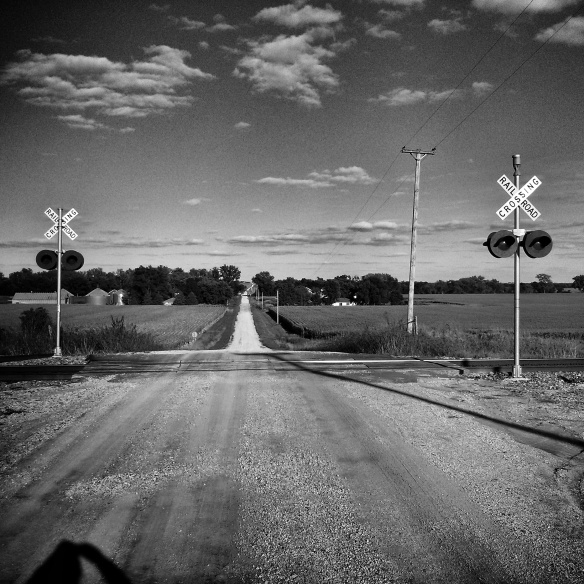
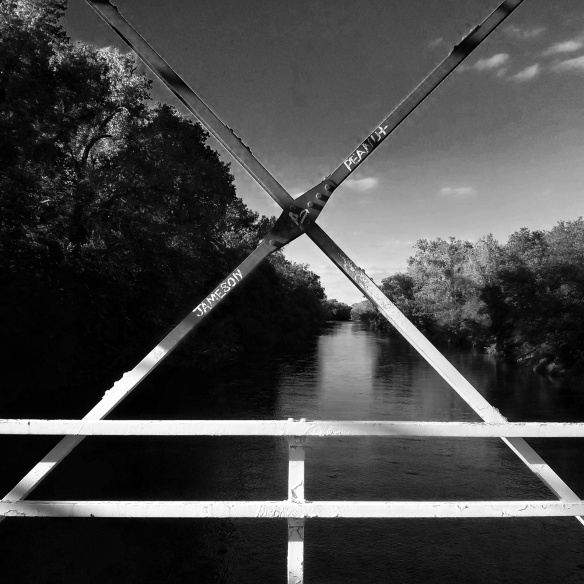
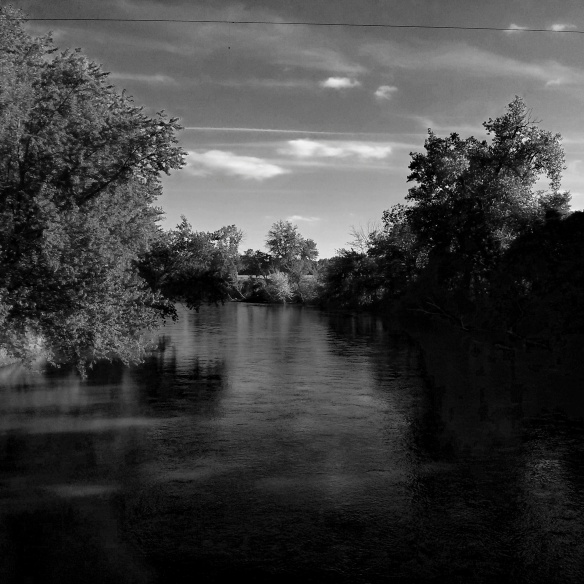
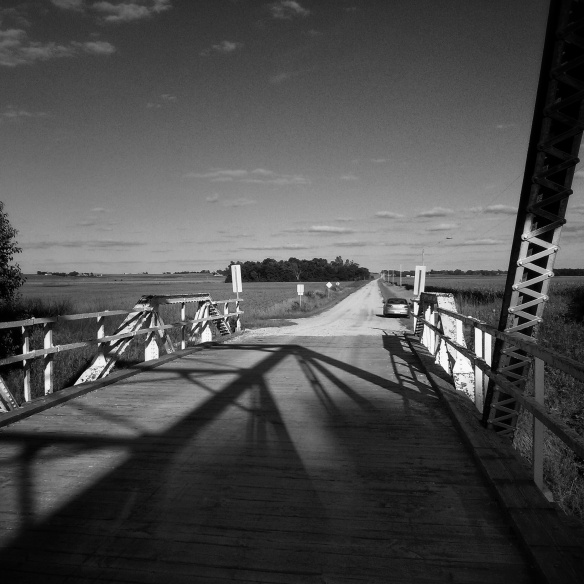
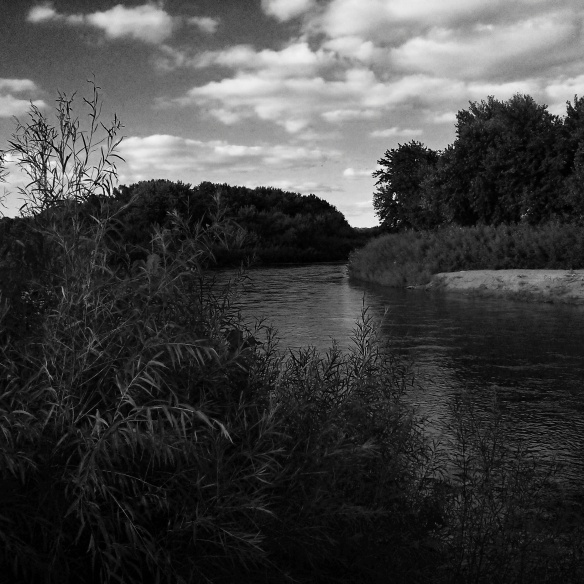
I’m confused… aliens wear lapels?
Also… I used to work for an aerial survey company, so I’m somewhat aware of the township/section concept. I was neither aware of its origin nor that schools were always slotted for section 16.
Thanks for doing the research so that we don’t have to!
LikeLike
Patrick, I have absolutely no idea why I know this. I just get curious about stuff.
And now you’ve got me thinking about alien forms of attire. What a great — and fairly simple — way to demonstrate alien cultural differences. My client who’s working on the sci-fi detective story will benefit from your comment. Ain’t it great how this stuff works?
Thanks.
LikeLike
Would it be an obvious perception that were aliens to wear anything garnished by lapels, and were those lapels originally equipped with a boutonniere, would it then be conceivable that the aliens ate the boutonniere not knowing what it was to begin with?
I’ll match my mind’s wanderings to your mind wanderings any day …
LikeLike
JCBP, happily this isn’t a mind-wandering contest.
LikeLiked by 1 person
I envy you in so many ways. For instance is your use of the English language which I can only hope to acquire. But there is this opportunity you have to browse the countryside. Although I come from a rural area of northeast Wisconsin, I’ve been in southeast Texas for more than thirty years. And due to the 24/7 nature of my work, it’s all but impossible for me to get away to enjoy the rural Texas countryside. But alas, some day I’ll retire and make the opportunity to see more of what lies out there beyond the areas my company services.
LikeLike
I hate my life but at least this makes it bealrbae.
LikeLike
I’m so sorry you feel that way about your life. Everyday life can be full of frustrations and annoyances. On the other hand, there’s always something interesting going on somewhere — and though that doesn’t make up for all the frustrations and annoyances, it does (as you say) make them more bearable.
I hope things go better for you.
LikeLike